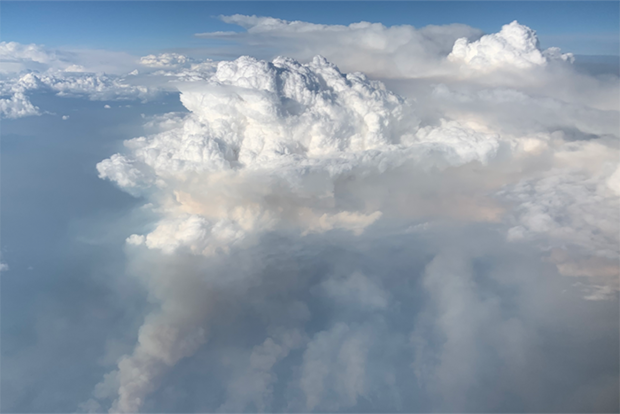Towering wildfire clouds have big impacts on the stratosphere

The Williams Flat Fire in British Columbia generated a fire cloud, or pyroCb, that injected smoke into the stratosphere on August 8, 2019. Credit: David Peterson, U.S. Navy

The Williams Flat Fire in British Columbia generated a fire cloud, or pyroCb, that injected smoke into the stratosphere on August 8, 2019. Credit: David Peterson, U.S. Navy
Images of vast clouds of wildfire smoke towering into the sky have become all too familiar from recent active fire years across the western United States and Australia. Now, a team of atmospheric scientists led by NOAA has demonstrated these big vertical plumes of wildfire smoke have a major long term impact on the stratosphere - and climate.
Fire-triggered thunderstorms, called pyrocumulonimbus or pyroCbs, are generated when the intense heat of a wildfire triggers a huge thunderstorm that carries smoke into the stratosphere, five to seven miles above the surface. In 2017, the flight path of a NASA airborne mission to study the background atmosphere over the remote oceans, the Atmospheric Tomography mission (ATom), intersected with smoke from the largest pyroCb event observed in the satellite era to that date over the Pacific Northwest. The smoke injection was so large that remote sensing instruments around the globe monitored it for more than eight months. Measurements showed that it and several additional Northern Hemisphere pyroCb events that year dominated contributions of black carbon and organic carbon to the lower stratosphere, the net effect of which cooled the planet.
Read more at the link below.